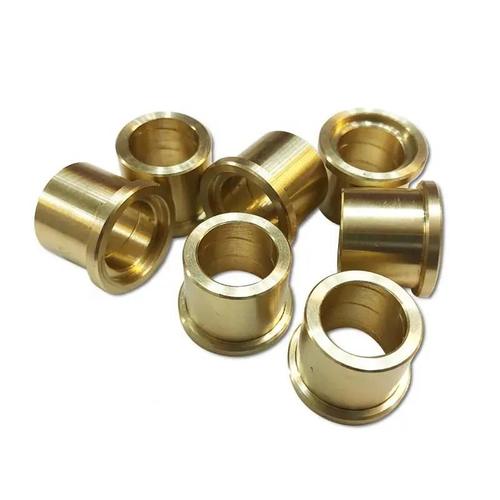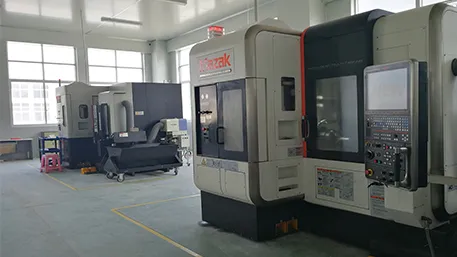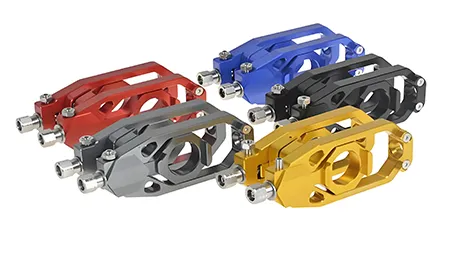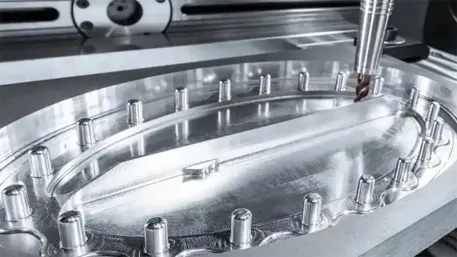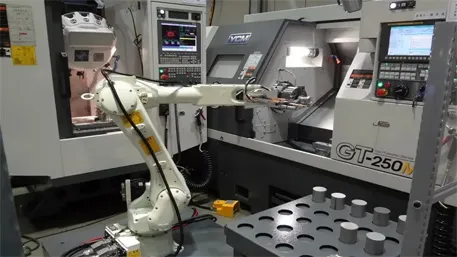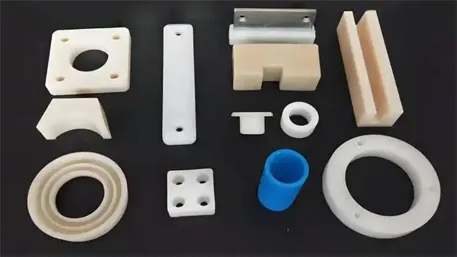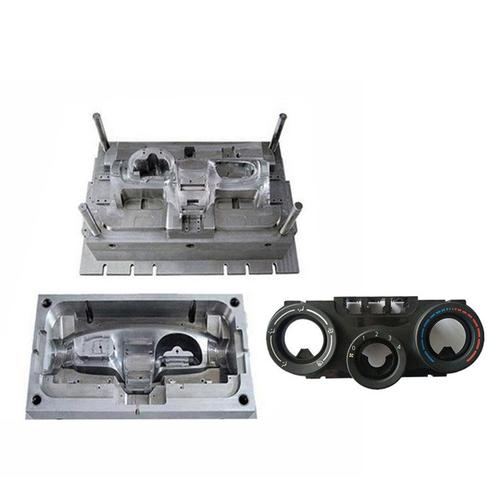Custom pulleys are essential power transmission components in mechanical systems, facilitating torque transfer and speed regulation through belt or chain drives. Specialized pulley machining combines precision engineering with material science to produce components tailored to specific load, speed, and environmental requirements. This article outlines the core aspects of custom pulley manufacturing, emphasizing technical specifications, production methods, and industry-specific implementations.
1. Material Selection and Performance Attributes
Custom pulley machining relies on material properties matched to operational demands:
Metallic materials dominate high-performance applications:
- Carbon steel (1045): Exhibits 600 MPa tensile strength and 187 HB hardness, suitable for 60% of industrial pulley applications. Offers optimal balance of strength and machinability, with operating temperature range -40°C to 200°C.
- Stainless steel (304): Provides 515 MPa tensile strength and 201 HB hardness, with corrosion resistance exceeding 1,000 hours in salt spray testing (ASTM B117). Ideal for food processing and marine environments.
- Aluminum (6061-T6): Delivers 310 MPa tensile strength at 30% of steel’s weight, featuring 95 HB hardness. Used in lightweight applications like conveyor systems, reducing energy consumption by 25%.
- Cast iron (GG25): Offers 250 MPa tensile strength with excellent vibration damping, employed in heavy-duty machinery pulleys requiring noise reduction.
Non-metallic options serve specialized needs:
- Glass-reinforced nylon: Provides 150 MPa tensile strength with 40% weight reduction vs. steel, suitable for low-load, corrosion-prone applications.
- Phenolic resin composites: Maintain dimensional stability up to 150°C, used in high-speed pulleys (2,000+ RPM) where heat resistance is critical.
Material selection is determined by load capacity (0.5-50 kN), operating speed (50-5,000 RPM), and environmental factors, with 92% of manufacturers offering material compatibility testing for custom applications.
2. Precision Machining Processes
Advanced manufacturing techniques ensure pulley performance and durability:
CNC turning centers produce pulley outer diameters with ±0.01 mm tolerance and concentricity within 0.02 mm, critical for vibration reduction. High-speed spindles (6,000-12,000 RPM) achieve surface finishes as low as Ra 1.6 μm on cylindrical surfaces, minimizing belt wear.
Milling operations create keyways, set screws, and hub features with positional accuracy of ±0.1 mm relative to the pulley axis. 4-axis CNC systems enable simultaneous machining of multiple groove profiles, reducing setup time by 40% for complex pulleys.
Balancing processes are mandatory for high-speed applications:
- Static balancing: Achieves G6.3 grade (ISO 1940) for pulleys operating below 1,000 RPM
- Dynamic balancing: Reaches G2.5 grade for speeds exceeding 3,000 RPM, reducing vibration by 70% compared to unbalanced components
Surface treatments enhance performance:
- Zinc plating (5-15 μm thickness): Provides 500+ hours of corrosion resistance in salt spray testing
- Powder coating (60-80 μm): Offers abrasion resistance exceeding 50 cycles (ASTM D4060)
- Hard anodizing (20-50 μm): Increases aluminum pulley surface hardness to 300 HV, extending service life by 300% in abrasive environments
3. Custom Design Parameters
Pulley machining accommodates diverse design requirements through precise customization:
Dimensional ranges cover:
- Outer diameter: 20 mm to 1,500 mm (standard), with larger sizes available via specialized tooling
- Width: 10 mm to 600 mm, supporting single or multiple groove configurations
- Hub diameter: 10 mm to 300 mm, with bore tolerances ranging from H7 to H9
Groove profiles include:
- V-groove (34°/40° angles): For V-belts, with groove depth tolerances of ±0.05 mm
- Flat groove: For flat belts, maintaining surface parallelism within 0.03 mm/m
- Timing pulley teeth: Conforming to ISO 5296 or ANSI B92.1 standards, with tooth profile accuracy of ±0.02 mm
- Chain sprocket teeth: Matching ANSI/ASME B29.1 standards, with pitch tolerances of ±0.015 mm
Specialized features include:
- Tapered bores (1:10 to 1:30 ratios) for interference fits
- Keyways (ANSI B17.1) with depth tolerances of ±0.02 mm
- Set screw holes (M5 to M20) positioned within ±0.5° of radial alignment
- Flanges (5-20 mm height) to prevent belt derailment
4. Quality Control and Testing Standards
Rigorous inspection protocols ensure pulley reliability under operational stress:
Dimensional verification includes:
- CMM (Coordinate Measuring Machine) analysis of critical features, with 100% inspection for high-speed pulleys
- Optical comparator checks for groove profile accuracy, ensuring ±0.02 mm conformity to design specifications
- Runout measurement (≤0.05 mm TIR) using dial indicators to prevent vibration-induced wear
Performance testing protocols:
- Dynamic balancing (per ISO 1940) to G2.5 grade for speeds >3,000 RPM, reducing vibration amplitude to <0.1 mm/s
- Static load testing at 150% of rated capacity for 10 minutes to detect material deformation
- Belt tracking verification over 1,000 cycles to ensure lateral runout ≤0.5 mm
- Corrosion resistance testing (ASTM B117) for 500+ hours for outdoor applications
Material certification includes:
- Chemical composition analysis (spectrometry) for metallic pulleys
- Hardness testing (Rockwell B/C scales) at 3-point locations
- Tensile strength verification (per ASTM E8) for load-bearing components
5. Industry-Specific Applications
Custom pulleys are engineered for specialized operational environments:
Industrial conveyor systems: Utilize 6061 aluminum pulleys with 304 stainless steel shafts, featuring V-groove profiles (34° angle) for synchronous belt drives. Typical diameters range 100-300 mm, with wall thickness 5-10 mm to balance weight and rigidity.
Automotive powertrains: Employ 1045 carbon steel pulleys with powder coating (80 μm thickness) for accessory drives. Crankshaft pulleys maintain concentricity within 0.03 mm to prevent belt slippage, with diameters 120-250 mm for passenger vehicles.
Agricultural machinery: Use cast iron pulleys with zinc plating (10 μm) for harvesters and irrigation systems. Features include reinforced hubs (15-25 mm thickness) and deep V-grooves to handle debris-laden environments.
Material handling equipment: Incorporate large-diameter (500-1,200 mm) steel pulleys with rubber lagging (60 Shore A durometer) for conveyor belts. Lagging reduces slippage by 40% and extends belt life by 2-3 times.
Elevator systems: Require high-precision (G1.0 balance grade) pulleys with 42CrMo alloy steel construction, supporting 10-50 kN loads with diameter tolerances ±0.005 mm to ensure smooth operation.
6. Production Capacity and Lead Times
Manufacturing capabilities scale to meet diverse volume requirements:
- Prototyping: 1-5 pieces produced in 3-5 business days using CNC machining, suitable for design validation
- Small batch: 5-50 pieces delivered in 7-10 days, accommodating custom groove configurations
- Medium production: 50-500 pieces with 10-15 day lead times, incorporating dedicated fixtures for consistent quality
- Large production: 500+ pieces requiring 15-30 days, utilizing automated CNC cells with cycle times 2-5 minutes per unit
Minimum order quantities (MOQs) start at 1 piece for prototypes, with volume discounts applying to orders exceeding 100 units. JIT (Just-In-Time) delivery programs are available for recurring orders, with 99% on-time delivery rates for established specifications.
Value-added services include:
- Assembly with bearings and shafts (reducing customer installation time by 30%)
- Custom packaging (wooden crates for large pulleys, anti-static bags for precision components)
- Global shipping with door-to-door delivery (2-7 days for international destinations)
7. Cost Factors and Engineering Optimization
Pricing is influenced by multiple technical and production variables:
Material costs constitute 40-60% of total price:
- Carbon steel pulleys: (25-)200 per unit (dependent on size: 100-500 mm diameter)
- Stainless steel pulleys: 30-50% premium over carbon steel, with (40-)300 price range
- Aluminum pulleys: (15-)150 per unit, offering 30% weight savings vs. steel
- Large-diameter (800+ mm) pulleys: (300-)1,500+ based on material and complexity
Design complexity adds 10-40% to base costs for features like:
- Multiple groove configurations (3+ grooves)
- Tapered bores with keyways
- Balancing to G2.5 or higher grades
- Custom surface treatments (e.g., hard chrome plating)
Volume discounts typically follow:
- 100-500 units: 10-15% reduction
- 500-1,000 units: 15-25% reduction
- 1,000+ units: 25-40% reduction
Engineering optimization services reduce costs by 15-20% through:
- Material substitution (e.g., aluminum for steel in low-load applications)
- Wall thickness optimization via FEA analysis
- Standardization of groove profiles where possible
Frequently Asked Questions
Q: What tolerance levels are achievable in custom pulley machining?
A: Standard tolerances include ±0.01 mm for outer diameters, ±0.02 mm for groove depths, and 0.05 mm TIR for runout. Precision grades can achieve ±0.005 mm on critical dimensions for high-speed applications.
Q: How is pulley balance grade determined for different applications?
A: Balance grade is selected based on operating speed: G6.3 for ≤1,000 RPM (general industrial), G2.5 for 1,000-3,000 RPM (automotive), and G1.0 for >3,000 RPM (precision machinery). Higher grades reduce vibration-induced wear.
Q: Can pulleys be designed for specific belt types?
A: Yes, custom pulleys are machined to match all standard belt types: V-belts (34°/40° angles), timing belts (MXL to XL pitches), flat belts, and chains (ANSI 03B to 24B sizes). Groove profiles are verified against belt manufacturer specifications.
If you require custom pulleys tailored to your power transmission system, our engineering team combines precision machining capabilities with material expertise to deliver components optimized for load, speed, and environment. Whether you need high-speed automotive pulleys or corrosion-resistant agricultural variants, we can produce to your exact drawings or performance requirements. Contact us to discuss your project—we’ll provide design recommendations, material options, and production timelines to ensure optimal pulley performance in your application.
